Medical Stock Photos: This man was about to be vaccinated against smallpox during Nigeria’s 1968 Smallpox Eradication program.
keywords: vaccine, smallpox, vaccination, black and white, African, 5695
Smallpox stock photos and related images.

Medical Stock Photos: This man was about to be vaccinated against smallpox during Nigeria’s 1968 Smallpox Eradication program.
keywords: vaccine, smallpox, vaccination, black and white, African, 5695

Africa Stock Photos: People in Niger, West Africa awaiting a smallpox and measles vaccination.
In 1979, the World Health Organization (WHO) declared the global eradication of smallpox and recommended that all countries cease vaccination.
Keywords: Africa, Africans, Niger, black and white, children

Africa Stock Photos: Vaccination of boys in West Africa while standing in front of a poster announcing Smallpox Eradication and Measles Control Programs. Note the use of jet guns.
Keywords: Africa, Africans, boys, smallpox eradication
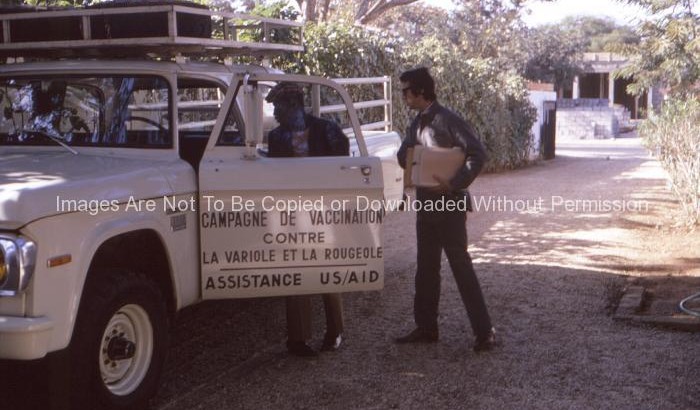
Africa Stock Photos: Photographed sometime in the early 1970s, during the worldwide smallpox eradication campaign, this image depicted two public health officials and their transport vehicle preparing to journey to neighboring towns in order to administer smallpox vaccinations, and acquire epidemiologic data about the epidemic at that time. This image was captured somewhere in French West Africa.
The Smallpox Vaccine
The smallpox vaccine helps the body develop immunity to smallpox. The vaccine is made from a virus called vaccinia which is a “pox”-type virus related to smallpox. The smallpox vaccine contains the “live” vaccinia virus—not dead virus, like many other vaccines. For that reason, the vaccination site must be cared for carefully to prevent the virus from spreading. Also, the vaccine can have side effects. The vaccine does not contain the smallpox virus and cannot give you smallpox.
Currently, the United States has a big enough stockpile of smallpox vaccine to vaccinate everyone in the United States in the event of a smallpox emergency.
Length of Protection
Smallpox vaccination provides high level immunity for 3 to 5 years and decreasing immunity thereafter. If a person is vaccinated again later, immunity lasts even longer. Historically, the vaccine has been effective in preventing smallpox infection in 95% of those vaccinated. In addition, the vaccine was proven to prevent or substantially lessen infection when given within a few days of exposure. It is important to note, however, that at the time when the smallpox vaccine was used to eradicate the disease, testing was not as advanced or precise as it is today, so there may still be things to learn about the vaccine and its effectiveness and length of protection.
Keywords: Africa, Africans, Smallpox, vaccine
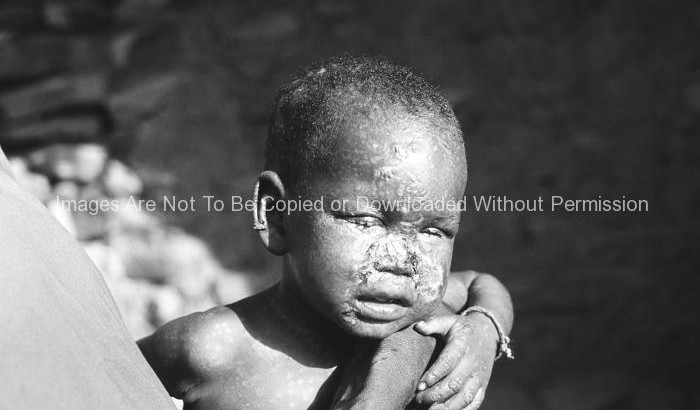
Africa Stock Photos: The child depicted in this 1969 photograph was an inhabitant of the former Republic of Upper Volta, West Africa, now known as Burkina Faso. Suffering from smallpox, this child also was battling the secondary infections that had developed on his face amongst the maculopapular smallpox lesions, which had developed.
Signs and Symptoms:
– For the first 7 to 17 days after exposure, the infected person feels fine and is not contagious (cannot spread the disease).
– After 7-17 days, the first symptoms of smallpox appear. These include fever, tiredness, head and body aches, and sometimes vomiting. The fever is usually high, in the range of 101 to 104 degrees Fahrenheit. At this time, people are usually too sick to carry on their normal activities. This stage may last for 2 to 4 days.
– Next, a rash appears first as small red spots on the tongue and in the mouth. A rash then appears on the skin, starting on the face and spreading to the arms and legs and then to the hands and feet. Usually the rash spreads to all parts of the body within 24 hours.
– The rash becomes raised bumps and the bumps become “pustules”, which are raised, usually round and firm to the touch as if there’s a small round object under the skin.
– The pustules begin to form a crust and then scab. By the end of the second week after the rash appears, most of the sores have scabbed over.
– The scabs begin to fall off, leaving scars. Most scabs will have fallen off three weeks after the rash first appears.
Keywords: Africa, Africans, Upper Volta, Burkina Faso, smallpox, child, black and white
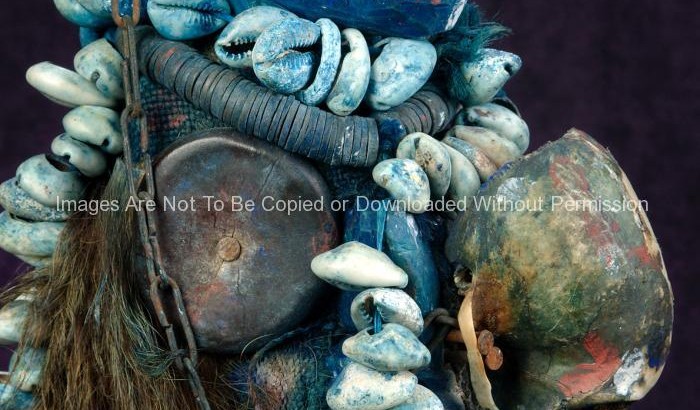
Africa Stock Photos: This is a statue of Shapona, the West African God of Smallpox. It is part of the CDC’s Global Health Odyssey (GHO) collection of artifacts. A uniquely carved wooden figure, it is adorned with layers of meaningful objects such as monkey skulls, cowrie shells, and nails. Donated in 1995 by Ilze and Rafe Henderson, it was created by a traditional healer who made approximately 50 Shaponas as commemorative objects for the CDC, WHO, and other public health experts attending a 1969 conference on smallpox eradication
Smallpox was thought to be a disease foisted upon humans due to Shapona’s “divine displeasure”, and formal worship of the God of Smallpox was highly controlled by specific priests in charge of shrines to the God. People believed that if angered, the priests themselves were capable of causing smallpox outbreaks through their intimate relationship with Shapona. Suspecting that the priests were deliberately spreading the viral disease, the British colonial rulers banned the worship of Shapona in 1907; however, worshiping the deity continued with the faithful paying homage to the God even after such activities were prohibited.
Keywords: Africa, Africans, Smallpox, superstition, smallpox, gods, idols, statue
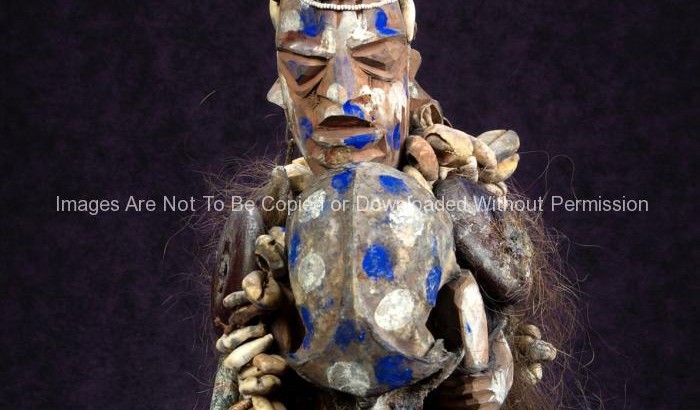
Africa Stock Photos: This is a statue of Shapona, the West African God of Smallpox. It is part of the CDC’s Global Health Odyssey (GHO) collection of artifacts. A uniquely carved wooden figure, it is adorned with layers of meaningful objects such as monkey skulls, cowrie shells, and nails. Donated in 1995 by Ilze and Rafe Henderson, it was created by a traditional healer who made approximately 50 Shaponas as commemorative objects for the CDC, WHO, and other public health experts attending a 1969 conference on smallpox eradication
Smallpox was thought to be a disease foisted upon humans due to Shapona’s “divine displeasure”, and formal worship of the God of Smallpox was highly controlled by specific priests in charge of shrines to the God. People believed that if angered, the priests themselves were capable of causing smallpox outbreaks through their intimate relationship with Shapona. Suspecting that the priests were deliberately spreading the viral disease, the British colonial rulers banned the worship of Shapona in 1907; however, worshiping the deity continued with the faithful paying homage to the God even after such activities were prohibited.
Keywords: Africa, Africans, Smallpox, idols, fake gods, gods of diseases
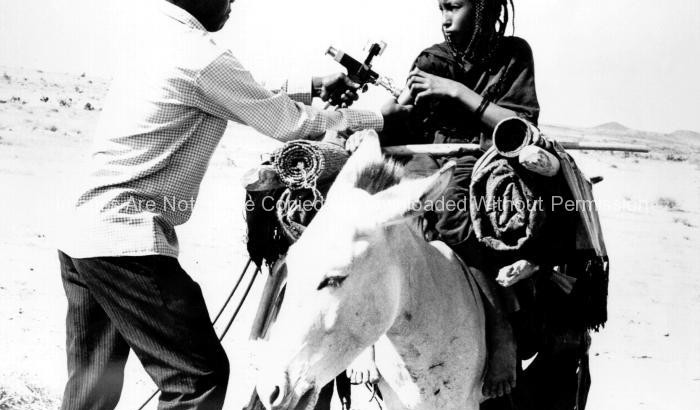
Africa Stock Photos: This nomadic Tuareg girl is receiving a smallpox vaccination in this 1967 photograph shot in Mali, West Africa.
The world’s last case of smallpox was documented as having occurred in Africa in 1977. In 1979, the WHO declared the global eradication of smallpox due to a worldwide vaccination campaign. The WHO then recommended that all countries cease vaccination.
Keywords: Africa, Africans, Smallpox, nomadic Tuareg girl
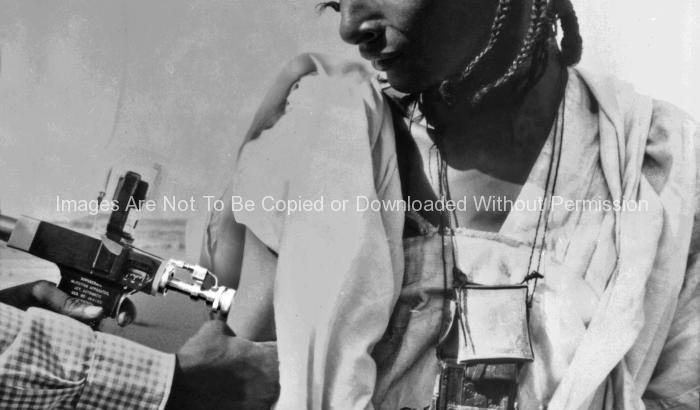
Africa Stock Photos: Photograph made during Smallpox Eradication and Measles Control Program in Niger, W. Africa, February, 1969.
In 1979, the World Health Organization (WHO) declared the global eradication of smallpox, and recommended that all countries cease vaccination.
Keywords: Africa, Africans, Niger, Vaccination, Smallpox
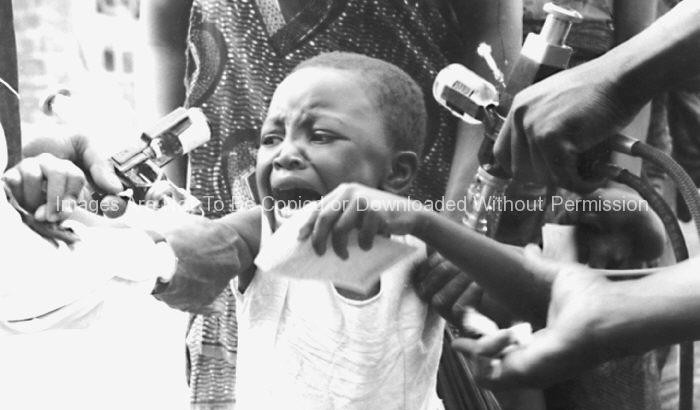
Africa Stock Photos: Smallpox vaccination of a West African child during the West Africa Smallpox Eradication and Measle Control Program.
The child is being vaccinated in both arms using a Hypospray Jet Gun. In 1979, the World Health Organization (WHO) declared the global eradication of smallpox, and recommended that all countries cease vaccination.
Keywords: Africa, Africans, Smallpox, smallpox and measles eradication